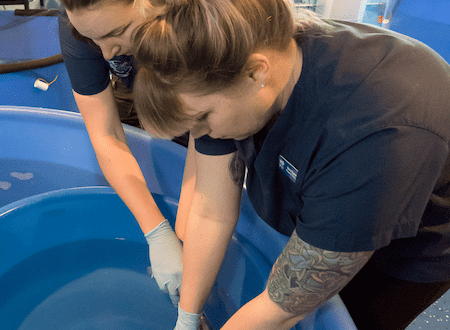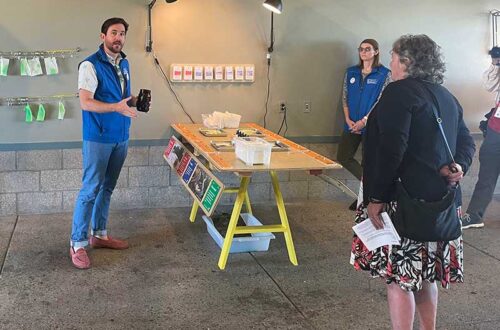Another great Positive Discipline tool to keep in your parenting “toolbox” is the Anger Wheel of Choice. The book Sophia’s Anger Wheel is a wonderful story to help teach kids about appropriate ways of expressing anger. This book can be ordered here: positivediscipline.com/products/sophias-anger-wheel-choice
All emotions are okay, not just pleasant/positive emotions. It’s very important to talk about ALL emotions with children so they can start to identify their own emotions as they come and go.
I found it helpful to have a feelings/emotions chart up in the house when my kids were little with real pictures of childrens’ faces (not just cartoon images) so we could point to how we were feeling at different times.
We also used the chart to talk about feelings in general. When talking to children about emotions, it’s great to remind them (and ourselves) that emotions do not stay forever; they come and go. When you are excited, you won’t feel excited forever.
When you are sad, you won’t feel sad forever. We often experience fear or shame around emotions that we are uncomfortable with, and just remembering the fact that the emotion will pass can be so helpful.
Once we are clear with ourselves and our children that ALL emotions are okay, we can begin to discuss behavior. What a child FEELS is always okay. What they DO, however, may not always be okay. Self-regulation is a life-long goal and is certainly not going to be mastered by a young child. But through lots of practice and modeling, children can learn safe and appropriate ways of expressing difficult emotions like anger, and they can learn ways to self-soothe and calm down when they are ready.
Rather than focusing on what it’s NOT okay to do when you’re angry (which can unintentionally reinforce what you’re trying to avoid), make a chart together with ideas about what you CAN do when you experience anger. Come up with ideas together as a family and put all the safe, appropriate ideas for expressing anger on your family’s Anger Wheel of Choice.
Display this somewhere in the home where everyone can see it (low enough that it’s at the eye-level of the child). Some ideas that may go on your wheel can include: go to your cool-down space, draw your feelings, mash clay, squeeze a pillow, yell outside, put the problem on the agenda for the next family meeting, etc. You can have a few ideas on the wheel already when you present it to your child, and ask if they have any ideas they’d like to add to the wheel.
When it comes to the Anger Wheel of Choice, here are some DOs and DON’Ts:
DO: Create the wheel WITH your kids. Involve them in as much of the process as possible. They can come up with ideas, draw the pictures, and/or help decide where to display the wheel.
DON’T: Discuss the Anger Wheel of Choice for the first time when your child is angry.
DO: Talk about the Anger Wheel of Choice at a time when everyone is calm. Our brains go into fight/flight/freeze mode when we are angry and when children are in this state they are not able to think clearly or learn.
DON’T: Force your child to pick one of the ideas off the wheel when they are angry. It’s just a visual tool to help children remember some positive ways of expressing their anger. It can easily turn into a power struggle if you try to force them to pick something and they are not interested. If they don’t want to pick something, that’s fine.
DO: Point to the wheel when your child is angry and ask if he or she would like to pick an idea from the wheel. Remember to validate your child’s feelings as well. This can look like: “It seems like you’re feeling really angry. You are yelling and hitting. It’s ok to feel angry and I’m not ok with being hit. Would you like to choose something from the Anger Wheel of Choice?” Sometimes the less words we use the better. Just pointing to the wheel when you notice your child is feeling angry can be enough of a reminder.
Remember that we have many tools, and that there is no tool that will work in every situation with every kid. Having the Anger Wheel of Choice as another tool in your home can be an asset to your family, but it won’t be the one thing that works every time. I like to think of each of the Positive Discipline tools as small stepping stones that lead toward a more peaceful, respectful home.
Hannah Stubblefield is a certified Positive Discipline Parent Educator. She is a former teacher and current co-owner of Wonderland Toys & Classroom Resources in Aptos. She is wife to Chris, step-mom to Sebastian, boy-mom to Adam, girl-mom to Maya, and dog-mom to Samson. Check out her ongoing in-person parenting classes at the Family Circle Center in Aptos.







